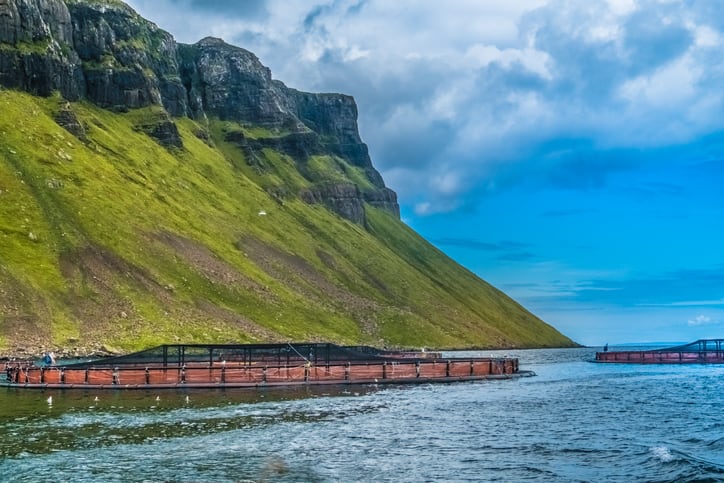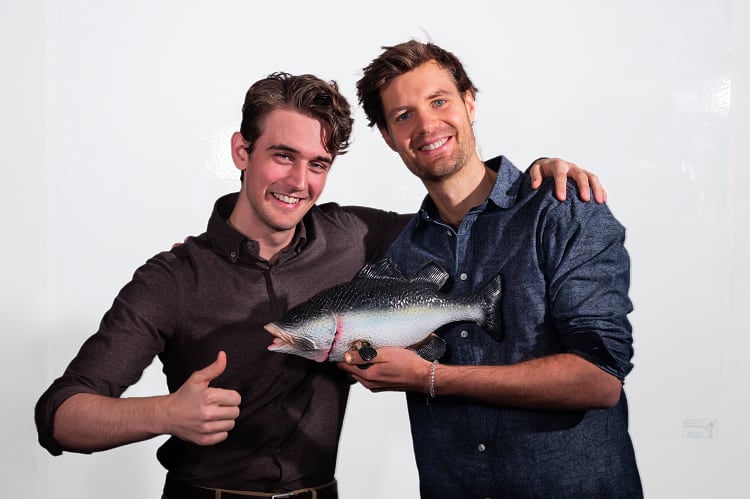A report published by non-profit financial think tank Planet Tracker claims that salmon production is fast approaching the practical physical limits permitted by current coastal farming methods.
Positive mid-term demand and higher prices may give the impression of a stable and profitable sector, the report said. However, both large- and small-scale producers in the farmed salmon industry are facing significant environmental threats, it pointed out, including climate change, disease, sea lice and harmful algal blooms, resulting in increased environmental constraint-based losses and price volatility.
The COVID-19 pandemic is exacerbating this volatility. Reduced demand has resulted in a 14% decline in spot prices in Q1 2020, according to Planet Tracker.
The report argued that the industry must invest in and move towards sustainable farming technology if it is to continue to increase production supply through to 2030 – either to off-shore closed caged systems (CCS), where the biological constraints are reduced; or to experimental high-tech inland recirculating aquaculture systems (RAS). Either option will entail substantial investment and likely cause salmon prices per kilogram to increase through to 2030.
“This report clearly shows the farmed salmon industry has reached a critical point in its development,” said Planet Tracker’s founder Mark Campanale.
“On the positive side, medium- to long-term demand for fish proteins is buoyant and, given the world population predictions, salmon undoubtedly has an important role to play in supplying necessary dietary protein.
“On the negative side, salmon is fast approaching the practical physical limits permitted by current coastal farming methods and is still some way from moving to more sustainable and profitable methods at scale.
“Unless coastal land and marine ecological health around salmon farms is improved, total production of farmed salmon will be lower than the current estimates, with supply of salmon from coastal sites declining due to worsening environmental factors such as build-up of effluent, disease and warming seas due to climate change.”
Planet Tracker recommended that farmed salmon companies should by the end of 2020:
- Report on compliance with environmental regulations and industry guidelines to highlight their environmental commitments to investors making them more attractive for investment.
- Maintain and report on an effective Environmental and Social Management System (ESMS). such as the CDC ESMS Toolkit. Such frameworks should be auditable and published and provide 100% citing of reasons for salmon losses.
- Deploy remote electronic monitoring systems with live data feeds accessible by investors and covering core environmental metrics such as water temperature and effluent control.
- Increase research and development spending on environmental risk mitigation such as disease and sea lice control measures.
- Strengthen control of third-party independent audited transparency and traceability reporting for all feed sources.
It recommended that investors should manage their exposure by 2021 by:
- Requiring companies to present and publish effective ESMS to support investors in analysing company valuation, financial performance and risk exposure.
- Pushing for assessments detailing chemical and antibiotic inputs into waterways and their origins to mitigate the incidence rates of harmful algal blooms and other problems. Without this knowledge, investors are less able to forecast potential salmon losses resulting from these events.
- Advocating for marine spatial planning to maximise sustainable farmed salmon production so as to mitigate environmental risks.
- Applying consistent methodologies, accounting standards (such as IAS 41) and reporting descriptions for both materialised environment related losses and stocking values. Standardised reporting would enable investors to better compare and benchmark the financial and operational performance of companies within their portfolios.
- Providing an update log of all salmon losses and account for the related financial costs.
- Monitoring environmental constraint losses and following revised maximum MAB (maximum allowable biomass) thresholds for 2020 post COVID-19.



